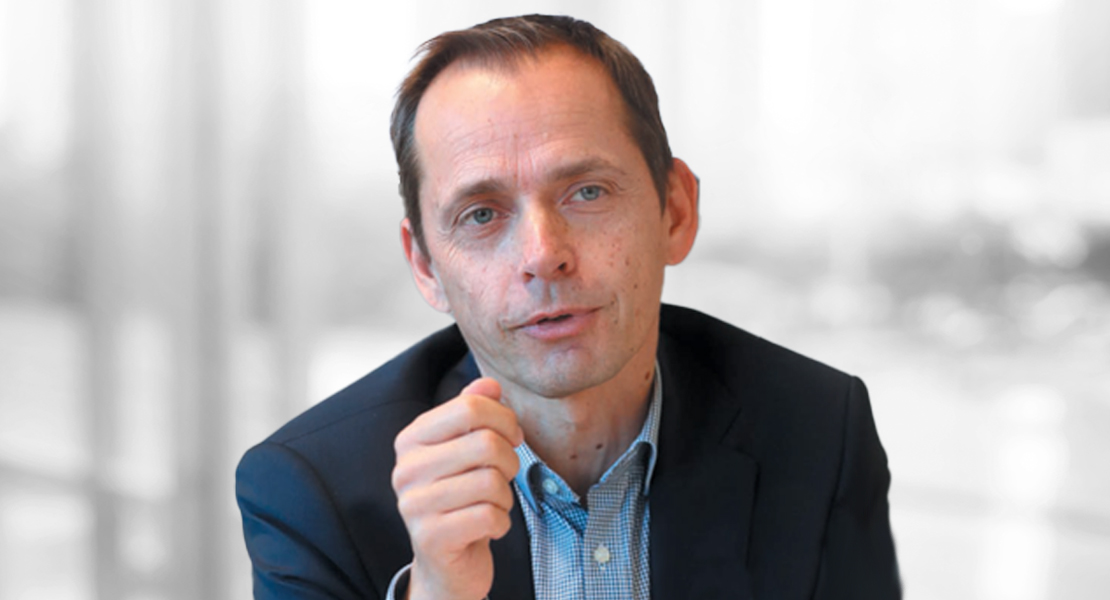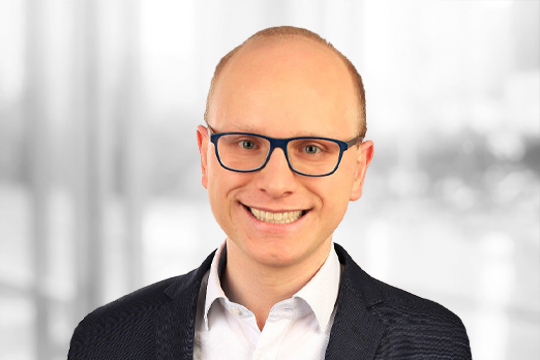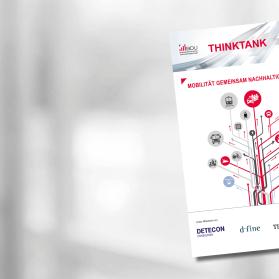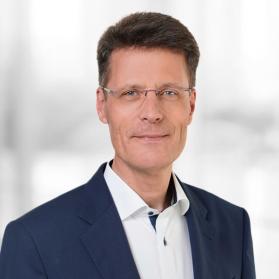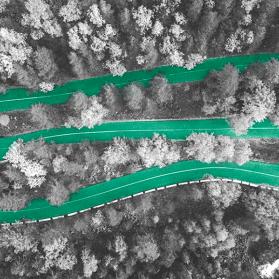As a partner for intelligent energy, the LEW Group supplies around one million people between Donauwörth in the north, Schongau in the south and Augsburg in the east not only with electricity, gas and water. With its six companies, LEW is also a provider of smart applications for the Internet of Things, paving the way for more electromobility and operating the digital infrastructure for the future 4.0. André Laggner, Head of Corporate Development at Lechwerke AG, talks about digitization, networked dog toilets and predictive maintenance for 36 hydropower plants.
Detecon: Mr. Laggner, a study by the bdew states that 85 percent of the energy suppliers are planning higher investments in digitization and that more than three quarters have a digital strategy. How digitally positioned do you see the LEW Group at present?
André Laggner: We developed a digital strategy for the entire LEW Group some time ago. This strategy defines the fields of action in which we want to become even more digital. Based on this, we then developed a digital roadmap for each business area. For example, for the distribution network and energy sales. For our business areas, we have defined the digital topics we want to work on over the next two years. The topic of digitization is therefore deeply anchored in our company with a clear plan. This means that the LEW Group is well positioned for digital transformation now and in the future.
Is the management also involved in the digitization process?
Absolutely, after all, digitization is one of the top issues for achieving the corporate goals we have set. Among other things, we meet several times a year with the Management Board and the heads of the respective business areas to exchange information about the current status of digitization, to discuss the digital roadmap, or to take up new topics. In addition, as part of the EON Group, we regularly exchange information with our sister companies on the topic of digitization. This is a great advantage for everyone, because everyone can benefit very well from the experiences of the other companies within the group. In this way, you avoid perhaps getting bogged down in one topic. Or you learn firsthand which measures work particularly well.
This can probably also be very motivating?
Absolutely. For example, we are currently conducting a digital maturity check across all our sister companies. We can then compare ourselves with the other companies in their business areas and see exactly where we might still need to catch up. And we know directly from whom we can learn something very practical. This exchange is therefore very valuable for everyone and a great advantage for the implementation of the digital roadmap.
Zur Person: André Laggner
André Laggner is Head of Corporate Development in the LEW Group since 2004. In this role, he is responsible, among other things, for setting up innovation management and also for coordinating the digital roadmap in the LEW Group. Previously, André worked in corporate development at RWE AG and as an analyst at McKinsey.
What exactly does it mean when LEW talks about driving the digital infrastructure for the future 4.0?
On the one hand, our telecommunications subsidiary LEW TelNet, with its 4,500-kilometer-long and steadily growing fiber optic network, is ensuring that the infrastructural basis for the future 4.0 is created in the region. And of course, digitization is also making steady progress at our company. Basically, digitization is about several, overarching areas: First, operational excellence can be improved. This includes the standardization and automation of processes. One example here is the smartification of the network through the use of intelligent operating equipment. Second, we can use digital solutions to improve interaction with our customers, in other words, our customer service. On the website, for example, these are chatbots that help customers get answers to their questions faster. You can already order a house connection from us online. This also includesOr there is an app that they can use to report network faults or other damage. For example, if a streetlight has failed. And thirdly, digitization enables the development of new business models. One example of this is the Inno Live tool, which we use to offer smart city applications to municipalities.
"We are a provider of smart applications for the Internet of Things," you write in your company presentation. Which applications are meant by this?
This includes, among other things, the LEW Inno.Live tool I just mentioned, with which we also offer municipalities and cities new services with the help of networked devices. With networked sensors, municipalities can collect data and link it intelligently with each other. This can be used to operate systems via which energy can be distributed and devices or applications digitally controlled. Examples include humidity, room temperature or parking lot sensors. These sensors can be networked via LoRa radio networks, which are inexpensive and are set up by our network subsidiary. The advantages of these radio networks are that they transmit small amounts of data over long distances of up to 50 kilometers and the sensors consume very little energy. The batteries therefore last for several years, which is why maintenance costs are extremely low.
You even offer networked dog toilets?
People always like to ridicule this example, but it is an excellent example of digitization. We have more and more dog owners who make sure they dispose of their four-legged friends' droppings. To this end, many municipalities offer bags in dispensers and set up special dog waste bins. However, this only works if there are always enough bags in the dispenser and the containers do not overflow. We offer municipalities an intelligent dog waste management system equipped with sensors. The bag dispensers automatically report whether the bags are slowly running out. And the collection bins send info on their fill level. What advantage does this have for the municipality? In the past, they had to drive around regularly for checks, even if it wasn't necessary. Today, they only drive to the stations when it's really necessary. That saves time and money. This is a very simple, very concrete and very useful example of digitization. You can see it in Stadtbergen, Königsbrunn or Denklingen. It works excellently. You can also use the system for a wide range of applications, not only for other waste garbage cans, but also for measuring humidity, filling levels or room temperature. Our range of sensors is continuously growing.
And what is the purpose of the moisture meters?
If municipalities equip their public flower containers, sports fields or lawns with moisture meters, they can record the moisture of the soils much more accurately and irrigate in a more targeted manner. This contributes significantly to financial savings and is also environmentally friendly. So the smart city can be implemented with very simple digital solutions.
So these new business models are often about processes?
Ultimately, we sell customers process and quality improvements. We often use these solutions ourselves and if we have had good experiences, we also offer these solutions to our customers. A very good example of this is our digital quality assurance for construction sites. We often had accidents during our work on utility networks, as this work is dangerous. We then introduced digital quality assurance in 2008 and were able to reduce the number of accidents to a third. The digital check of a construction site is done step by step completely with a tablet. By working through checklists digitally, work safety can be increased, transparent reports are generated, and it is thus possible to prove whether everything has been done properly.
You are also improving your internal processes with digital solutions. For example, in November 2020, you completed the modernization of hydropower plants on the Lower Lech?
Power plants have long been largely digitized. Unmanned power plant operation with remote monitoring and automatic control as well as automatic startup and shutdown of turbines has been state of the art for years. What we did at the hydropower plants is therefore not fundamentally significantly new for the control of power plants. But there was still potential for optimization here, too. In the course of modernizing the plants, we equipped our hydropower stations with sensors that we integrated into our control system. These sensors record the pressure in hydraulic lines, for example, and regularly report this data to the control station. Now we know in real time what condition the lines are in. If limit values are undershot or overshot, we can make targeted checks and carry out repairs if necessary. So it's all about predictive maintenance and maintenance optimization, which again means cost savings.
What are LEW's digitization plans for the future?
We will certainly not run out of ideas. In some areas, we are only at the beginning, as new solutions are constantly coming onto the market. Basically, it's always about more intelligence. Since we generate and distribute electricity, sell energy and are also active in the telecommunications sector, there are numerous approaches to more digitization. Other areas in which we are already active include solar cloud, smart living topics such as intelligent lighting, energy management systems and virtual power plants. We are also the number one e-mobility provider in our region, operating more than 300 public charging points. The topics of smart metering and smart grid are also only now really taking off. So there is still a lot of potential for digitization in the coming years.

